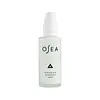What's inside
What's inside
 Key Ingredients
Key Ingredients

 Benefits
Benefits

 Concerns
Concerns

 Ingredients Side-by-side
Ingredients Side-by-side

Aloe Barbadensis Leaf Juice
Skin ConditioningPyrus Malus Juice
Skin ConditioningVitis Vinifera Juice
AntioxidantCaprylic/Capric Triglyceride
MaskingSimmondsia Chinensis Seed Oil
EmollientGlycerin
HumectantCitrus Limon Juice
Skin ConditioningCetyl Alcohol
EmollientStearyl Alcohol
EmollientGlyceryl Stearate
EmollientStearic Acid
CleansingHelianthus Annuus Seed Oil
EmollientEthylhexyl Palmitate
EmollientXanthan Gum
EmulsifyingButyrospermum Parkii Butter
Skin ConditioningMalus Domestica Fruit Cell Culture Extract
Skin ConditioningVitis Vinifera Fruit Cell Extract
Skin ConditioningCitrus Limon Fruit Extract
MaskingTocopherol
AntioxidantOenothera Biennis Oil
EmollientLinum Usitatissimum Seed Oil
PerfumingSalvia Officinalis Oil
MaskingSodium Benzoate
MaskingPotassium Sorbate
PreservativeEthylhexylglycerin
Skin ConditioningMagnesium Ascorbyl Phosphate
AntioxidantPanthenol
Skin ConditioningAllantoin
Skin ConditioningCitrus Reticulata Peel Extract
Skin ConditioningLitsea Cubeba Fruit Oil
MaskingCinnamomum Camphora Bark Oil
MaskingIsomalt
HumectantLecithin
EmollientEthyl Linalool
MaskingGeraniol
PerfumingAloe Barbadensis Leaf Juice, Pyrus Malus Juice, Vitis Vinifera Juice, Caprylic/Capric Triglyceride, Simmondsia Chinensis Seed Oil, Glycerin, Citrus Limon Juice, Cetyl Alcohol, Stearyl Alcohol, Glyceryl Stearate, Stearic Acid, Helianthus Annuus Seed Oil, Ethylhexyl Palmitate, Xanthan Gum, Butyrospermum Parkii Butter, Malus Domestica Fruit Cell Culture Extract, Vitis Vinifera Fruit Cell Extract, Citrus Limon Fruit Extract, Tocopherol, Oenothera Biennis Oil, Linum Usitatissimum Seed Oil, Salvia Officinalis Oil, Sodium Benzoate, Potassium Sorbate, Ethylhexylglycerin, Magnesium Ascorbyl Phosphate, Panthenol, Allantoin, Citrus Reticulata Peel Extract, Litsea Cubeba Fruit Oil, Cinnamomum Camphora Bark Oil, Isomalt, Lecithin, Ethyl Linalool, Geraniol
Water
Skin ConditioningAlgae Extract
EmollientCoco-Caprylate/Caprate
EmollientMacadamia Ternifolia Seed Oil
EmollientSorbitan Olivate
EmulsifyingCetearyl Glucoside
EmulsifyingButyrospermum Parkii Butter
Skin ConditioningSimmondsia Chinensis Seed Oil
EmollientPersea Gratissima Oil
Skin ConditioningTocopherol
AntioxidantCalendula Officinalis Flower Extract
MaskingLysine Lauroyl Methionate
Skin ConditioningXanthan Gum
EmulsifyingGinkgo Biloba Leaf Extract
Skin ConditioningChamomilla Recutita Flower Extract
MaskingLavandula Angustifolia Oil
MaskingPelargonium Graveolens Oil
MaskingMagnesium Aluminum Silicate
AbsorbentCitrus Grandis Peel Oil
MaskingPotassium Sorbate
PreservativeGlycine
BufferingWater, Algae Extract, Coco-Caprylate/Caprate, Macadamia Ternifolia Seed Oil, Sorbitan Olivate, Cetearyl Glucoside, Butyrospermum Parkii Butter, Simmondsia Chinensis Seed Oil, Persea Gratissima Oil, Tocopherol, Calendula Officinalis Flower Extract, Lysine Lauroyl Methionate, Xanthan Gum, Ginkgo Biloba Leaf Extract, Chamomilla Recutita Flower Extract, Lavandula Angustifolia Oil, Pelargonium Graveolens Oil, Magnesium Aluminum Silicate, Citrus Grandis Peel Oil, Potassium Sorbate, Glycine
Ingredients Explained
These ingredients are found in both products.
Ingredients higher up in an ingredient list are typically present in a larger amount.
This ingredient is also known as shea butter. It is an effective skin hydrator and emollient.
Emollients help soothe and soften your skin. It does this by creating a protective film on your skin. This barrier helps trap moisture and keeps your skin hydrated. Emollients may be effective at treating dry or itchy skin.
Shea butter is rich in antioxidants. Antioxidants help fight free-radicals, or molecules that may harm the body. It is also full of fatty acids including stearic acid and linoleic acid. These acids help replenish the skin and keep skin moisturized.
While Shea Butter has an SPF rating of about 3-4, it is not a sunscreen replacement.
Shea butter may not be fungal acne safe. We recommend speaking with a professional if you have any concerns.
Learn more about Butyrospermum Parkii ButterPotassium Sorbate is a preservative used to prevent yeast and mold in products. It is commonly found in both cosmetic and food products.
This ingredient comes from potassium salt derived from sorbic acid. Sorbic acid is a natural antibiotic and effective against fungus.
Both potassium sorbate and sorbic acid can be found in baked goods, cheeses, dried meats, dried fruit, ice cream, pickles, wine, yogurt, and more.
You'll often find this ingredient used with other preservatives.
Learn more about Potassium SorbateThis oil comes from the seeds of the desert shrub called Jojoba. It is more commonly known as jojoba oil, a non-comedogenic oil.
Jojoba oil does not contain fragrance and has many fatty-acids, making it a great soothing ingredient.
It also contains Vitamin E, a great moisturizing ingredient. Vitamin E is also an antioxidant and protects your skin against oxidative damage.
This ingredient humectant properties, meaning it helps draw moisture from the air. This helps keep your skin hydrated.
While jojoba has antibacterial properties, it is only able to kill some strains of bacteria.
Studies also show it helps in wound healing. In fact, Indigenous cultures have used jojoba as a moisturizer and to help treat burns for centuries.
Fun fact: Jojoba oil similar to natural human skin sebum, so it has a great effect on dry skin. It is also promising with helping to regulate sebum production.
Due to its fatty acid content, Jojoba oil may not be fungal acne safe. We recommend speaking with a professional if you have any concerns.
Learn more about Simmondsia Chinensis Seed OilTocopherol (also known as Vitamin E) is a common antioxidant used to help protect the skin from free-radicals and strengthen the skin barrier. It's also fat soluble - this means our skin is great at absorbing it.
Vitamin E also helps keep your natural skin lipids healthy. Your lipid skin barrier naturally consists of lipids, ceramides, and fatty acids. Vitamin E offers extra protection for your skin’s lipid barrier, keeping your skin healthy and nourished.
Another benefit is a bit of UV protection. Vitamin E helps reduce the damage caused by UVB rays. (It should not replace your sunscreen). Combining it with Vitamin C can decrease sunburned cells and hyperpigmentation after UV exposure.
You might have noticed Vitamin E + C often paired together. This is because it is great at stabilizing Vitamin C. Using the two together helps increase the effectiveness of both ingredients.
There are often claims that Vitamin E can reduce/prevent scarring, but these claims haven't been confirmed by scientific research.
Learn more about TocopherolXanthan gum is used as a stabilizer and thickener within cosmetic products. It helps give products a sticky, thick feeling - preventing them from being too runny.
On the technical side of things, xanthan gum is a polysaccharide - a combination consisting of multiple sugar molecules bonded together.
Xanthan gum is a pretty common and great ingredient. It is a natural, non-toxic, non-irritating ingredient that is also commonly used in food products.
Learn more about Xanthan Gum